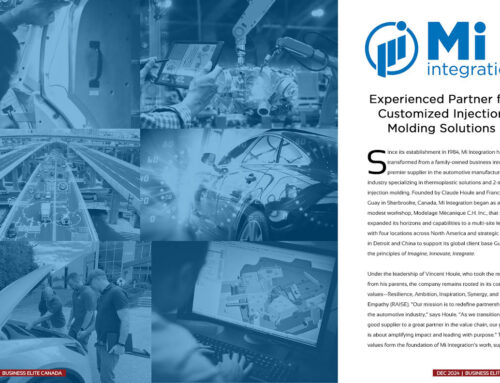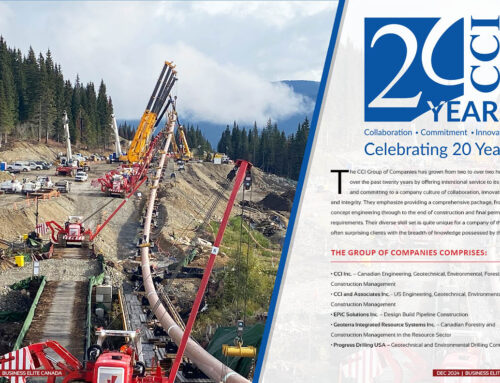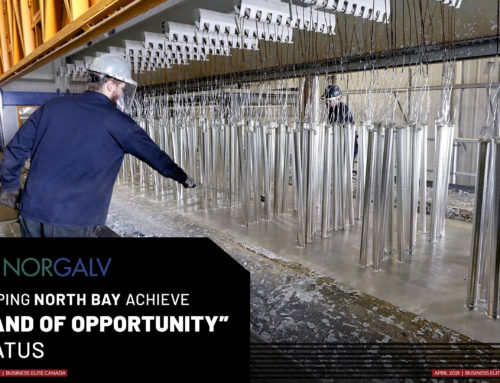 New research indicates a positive outlook for the Canadian manufacturing sector in 2013—including business leaders’ expectations of increased revenue growth, profits, orders, as well as plans to invest for growth. However, a more detailed analysis reveals several important calls-to-action if manufacturers are to fully benefit from growth opportunities in the U.S. and emerging markets.
New research indicates a positive outlook for the Canadian manufacturing sector in 2013—including business leaders’ expectations of increased revenue growth, profits, orders, as well as plans to invest for growth. However, a more detailed analysis reveals several important calls-to-action if manufacturers are to fully benefit from growth opportunities in the U.S. and emerging markets.
Fourth quarter Canadian results from The Grant Thornton International Business Report(IBR) indicate that across all sectors, profitability expectations jumped by 6% (from 41% to 47%), and investment in plant and machinery also rose 6% (from 36% to 42%). The IBR reveals a Canadian manufacturing sector that is significantly more optimistic about growth for the coming year – at 62% versus only 47% for other Canadian industries. IBR results also show that almost three-quarters (72%) of manufacturers think exports will either hold steady or increase.
“Although the global manufacturing sector has been in survival mode for the last few years, Canada is well positioned for future growth,” says Jim Menzies, National Leader, Manufacturing and Distribution, Grant Thornton LLP. “Not only is our banking system strong, but access to finance—one of the driving forces of economic growth—is fluid. Manufacturers also tell us that despite their many challenges and constraints, they are increasingly optimistic.”
Manufacturers missing growth opportunities in emerging markets
Another recently-published Grant Thornton International report, 2013 Global Business Outlook, shows general Canadian business optimism in tenth place1 in the global “business optimism league tables” with a balance2 of 47% saying they are feeling positive, down 7% from the last quarter. With the global economic outlook so uncertain, businesses around the world are cautious about investing in the future growth of their operations, and expectations for future investment have barely moved over the past 12 months3.
With large corporates already sitting on over U.S. $4trillion of cash reserves, the concern is that a huge source of potential private sector growth is lying dormant. The global survey reveals that more than half (57%) of business leaders considering international expansion are looking at the five biggest emerging economies (China, India, Russia, Brazil and Mexico) compared to over one-third (38%) who are looking at Western Europe and one-third (33%) considering North America. Over 70% of the Canadian businesses surveyed said that Canadian businesses should focus on a more global approach, with less reliance on the U.S.
“Canadian manufacturers are missing out on significant growth opportunities in emerging markets,” says Menzies. “Expanding to emerging markets is something Canadians have traditionally backed away from,” he explains. “As a result, they have not even scratched the surface of significant growth opportunities in many emerging regions, including places like South America.”
Growth hinges on a more sophisticated and tailored approach to trading with the United States
The re-emergence of the U.S. economy will have a very profound and positive effect on the Canadian manufacturing sector. Menzies explains that our proximity to the U.S. has meant that Canadian manufacturers rely heavily on their largest trading partner, leaving them vulnerable to the U.S. economic recession, financial crisis, and more recent fiscal cliff issues. However, he continues, “The indicators over the past few months show that the U.S. economy is poised for a re-emergence over the next year or two as the United States comes through these more recent troubles.”
Menzies also believes Canadian manufacturers should take a more sophisticated approach to trading with the U.S. market. Instead of approaching the U.S. as a single entity, he believes it should be approached as a collection of different economies and cultures.
“The differences between certain regions within the U.S. is much more significant than its differences with regions of Canada. For example, Ontario has more in common with Michigan than Michigan has with Alabama or California. Similarly, British Columbia has more in common with the Pacific Northwest than it does with New York. These regional economic pockets each have a unique set of demands for Canadian products that can be leveraged with the right strategy and approach.”
Canadian manufacturers not planning to hire, but most planning to give raises
According to IBR data, while fewer Canadian companies are planning to increase the number of employees in the coming year (24%, down 3% from last quarter), Canadian businesses are overwhelmingly (89%) expecting to give their employees a raise this year.
“With the global economic outlook so uncertain for so long, businesses have understandably been cautious about upping investment in the future growth of their workforce and operations. But investing in research and development and innovation programs will be a smart move for many manufacturers,” says Menzies. “Canada is a relatively high-cost producer and we excel at high quality, more complex, more innovative products that command premium prices. As a result, strategic product development is essential to the growth of the Canadian manufacturing industry.”
Manufacturers also need to act on strategic merger and acquisition (M&A) opportunities. “This is one area where manufacturers need to be extremely agile. If they don’t have a strategy in place to quickly and effectively evaluate opportunities to buy undervalued companies, they won’t be able to capitalize on important growth prospects.”
Manufacturers need to proactively mitigate risk and uncertainty to grow
According to the IBR, Canadian manufacturers are generally less worried about access to finances than other business leaders around the world, but they are concerned about other issues related to growth. The most significant include availability of a skilled workforce (32%) and regulations/red tape (24%).
“At the end of the day, Canadian manufacturers are learning to live with uncertainty and in doing so, becoming more comfortable with risk,” says Menzies. This means being more strategic and flexible, but it also means being prepared to face and manage risk. With so many variables out of their control, Canadian manufacturers need to focus on their risk strategies and better manage these variables. Instead of thinking day-to-day or quarter-to-quarter, manufacturers need to start proactively planning for uncertainty now and into the foreseeable future.”





